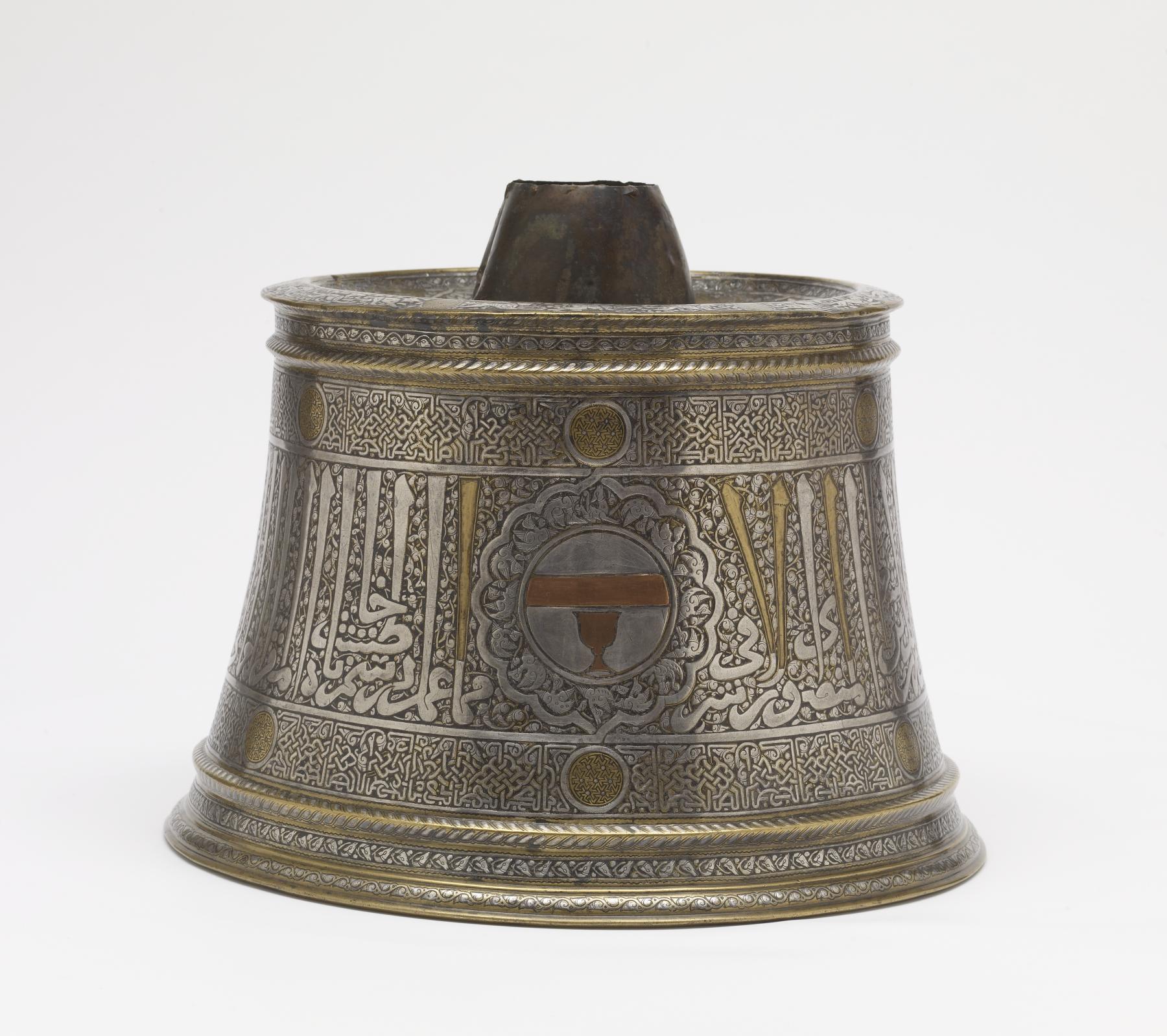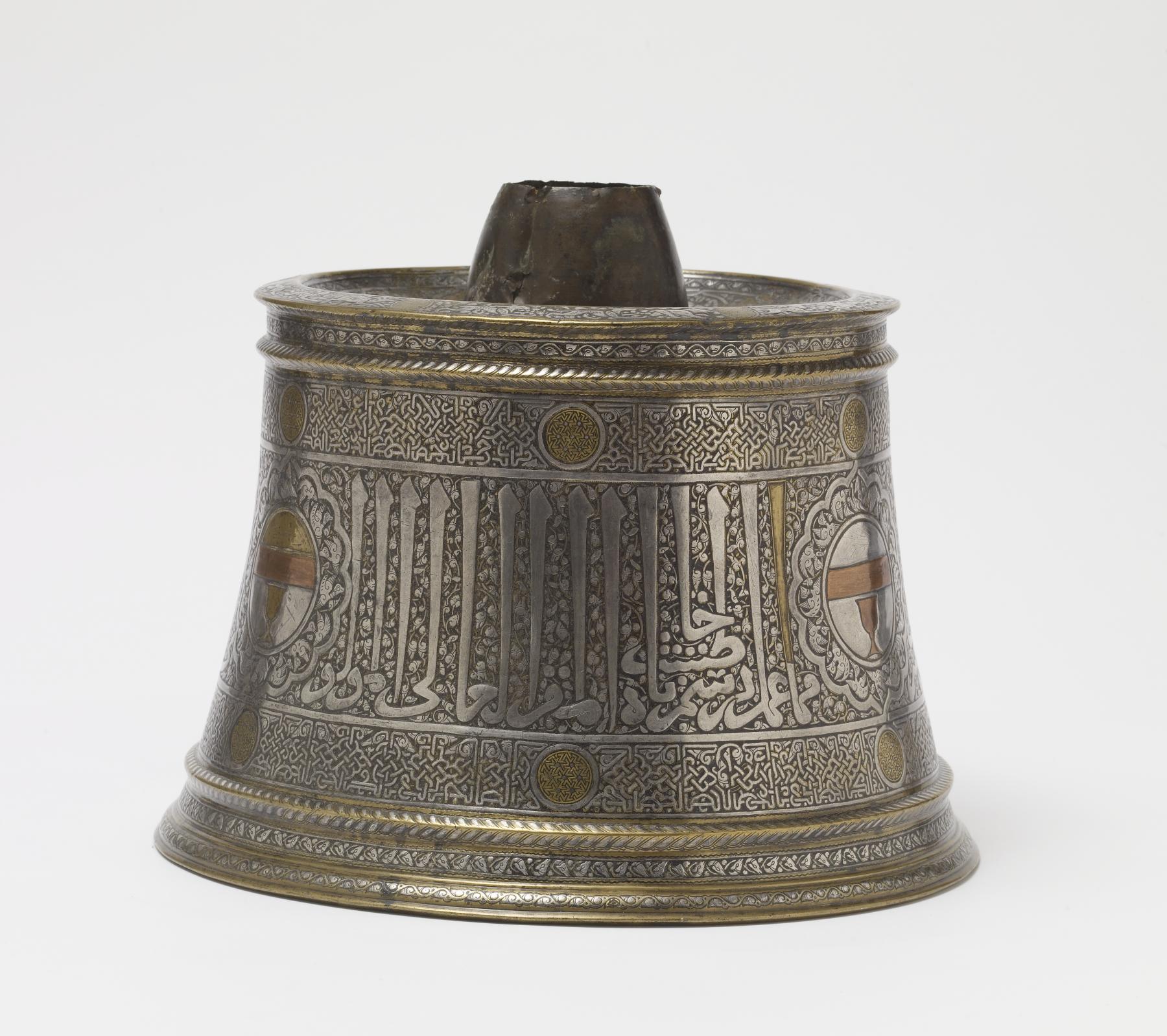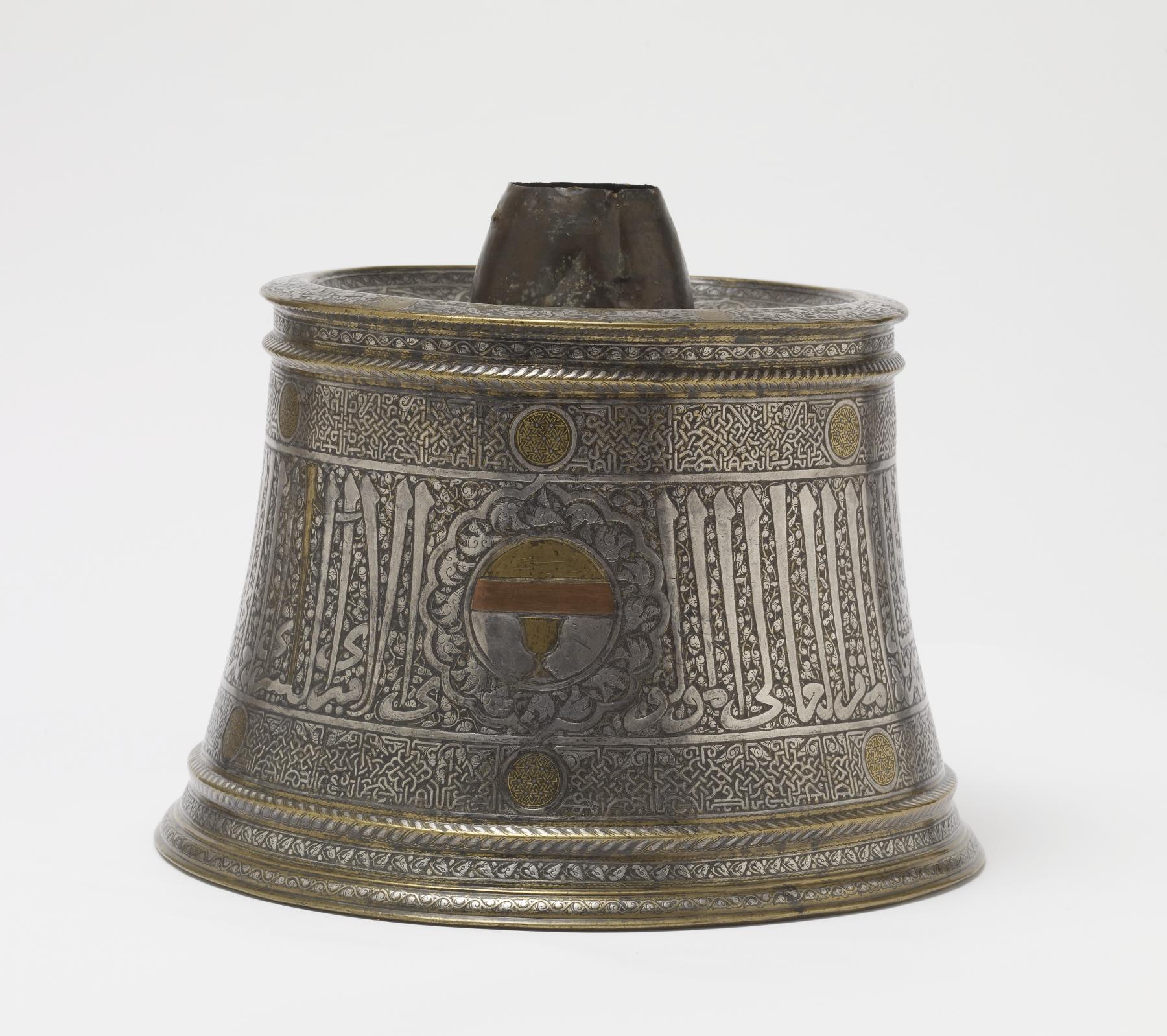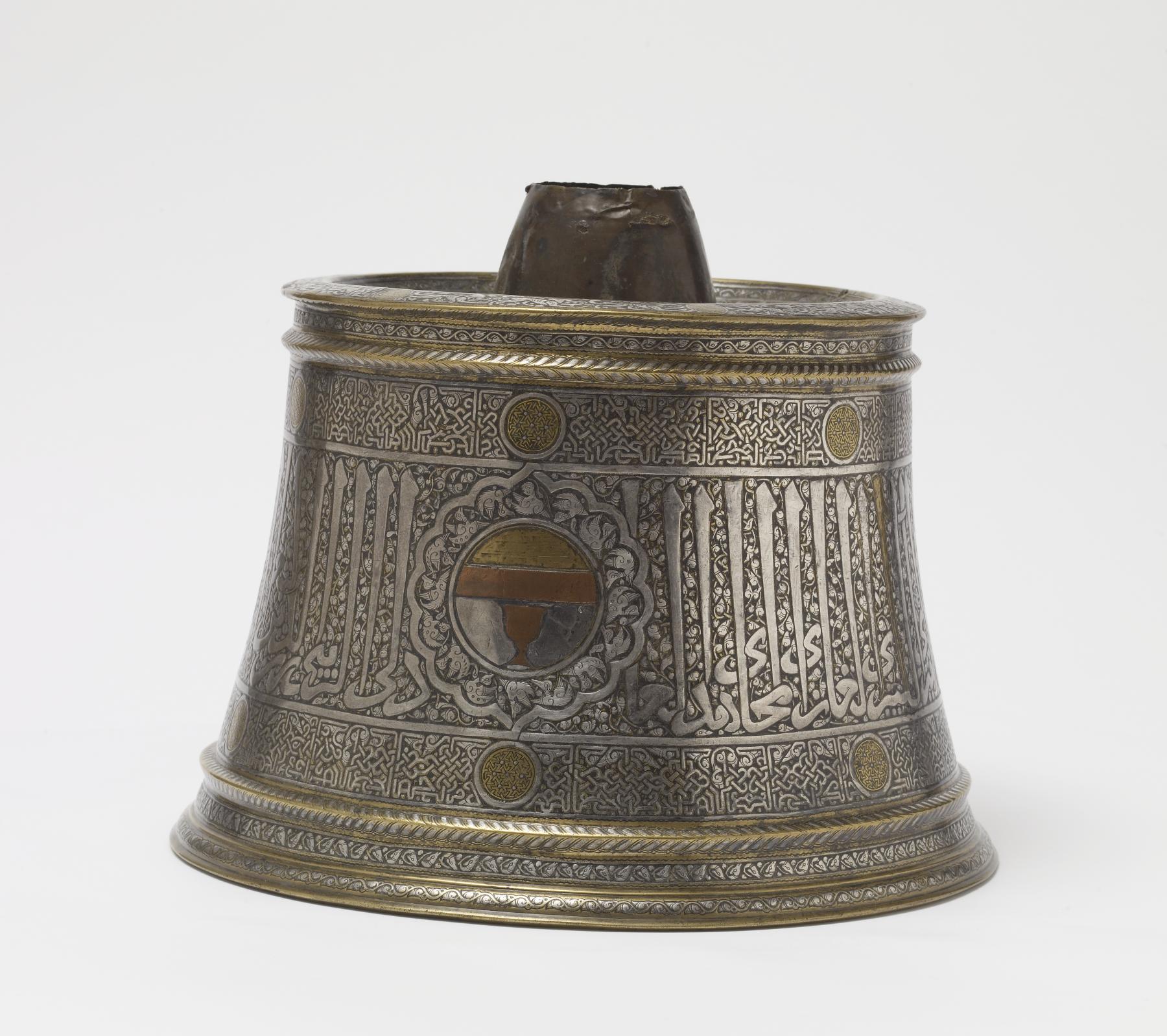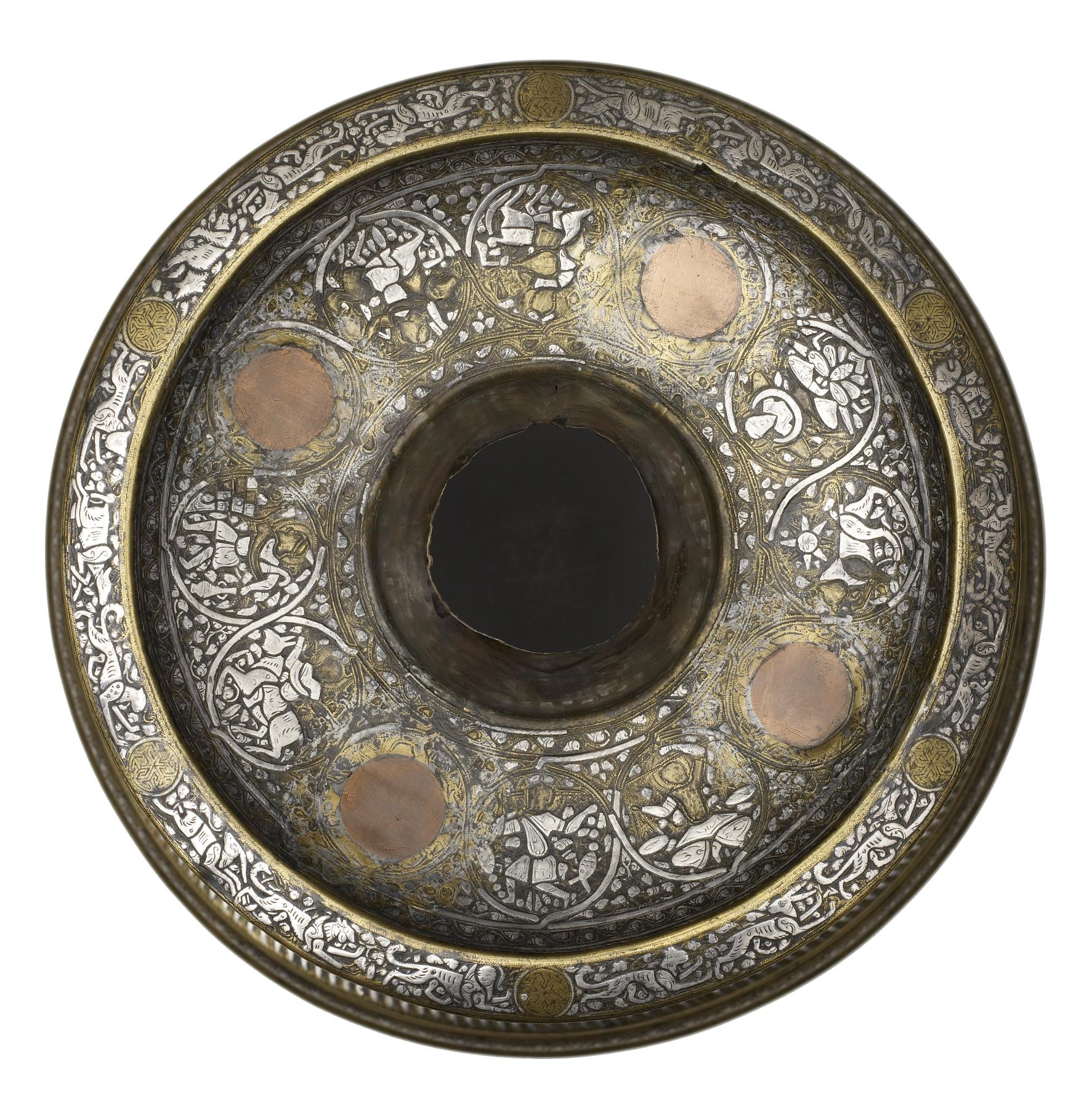Candlestick Base
(Islamic World )
Throughout Islamic history, sultans, princes, and court officials have been active art patrons. This impressive candlestick base was commissioned by Zayn al-Din Kitbugha, who served as saqi, official cupbearer, at the court of the Mamluks in Egypt before ascending the throne in 1294. The heraldic emblem of Kitbugha’s office, a stemmed cup (inscribed in a circle), features prominently in the candlestick’s decoration. Despite its elaborate design, Kitbugha used the candlestick in his household storeroom or pantry.
This base was originally combined with a neck and socket—today in Cairo—which together could bear the weight of a single monumental candle.
Inscription
Provenance
Provenance (from the French provenir, 'to come from/forth') is the chronology of the ownership, custody, or location of a historical object. Learn more about provenance at the Walters.
Dikran Kelekian, New York and Paris; Henry Walters, Baltimore, 1925, by purchase; Walters Art Museum, 1931, by bequest.
Exhibitions
| 1998-2001 | Highlights from the Collection. The Walters Art Gallery, Baltimore. |
| 1981-1983 | Renaissance of Islam: Art of the Mamluks. Smithsonian National Museum of Natural History, Washington; Minneapolis Institute of Art, Minneapolis; The Metropolitan Museum of Art, New York; Cincinnati Art Museum, Cincinnati; The Detroit Institute of Arts, Detroit; Crocker Art Museum, Sacramento; San Diego Museum Of Art, San Diego; Phoenix Art Museum, Phoenix; Wadsworth Atheneum Museum of Art, Hartford. |
| 1976 | The Arts of Islam. Hayward Gallery, London. |
Geographies
Egypt (Place of Origin)
Measurements
H: 10 7/16 x Diam: 12 13/16 in. (26.5 x 32.5 cm)
Credit Line
Acquired by Henry Walters, 1925
Location in Museum
Accession Number
In libraries, galleries, museums, and archives, an accession number is a unique identifier assigned to each object in the collection.
In libraries, galleries, museums, and archives, an accession number is a unique identifier assigned to each object in the collection.
54.459


